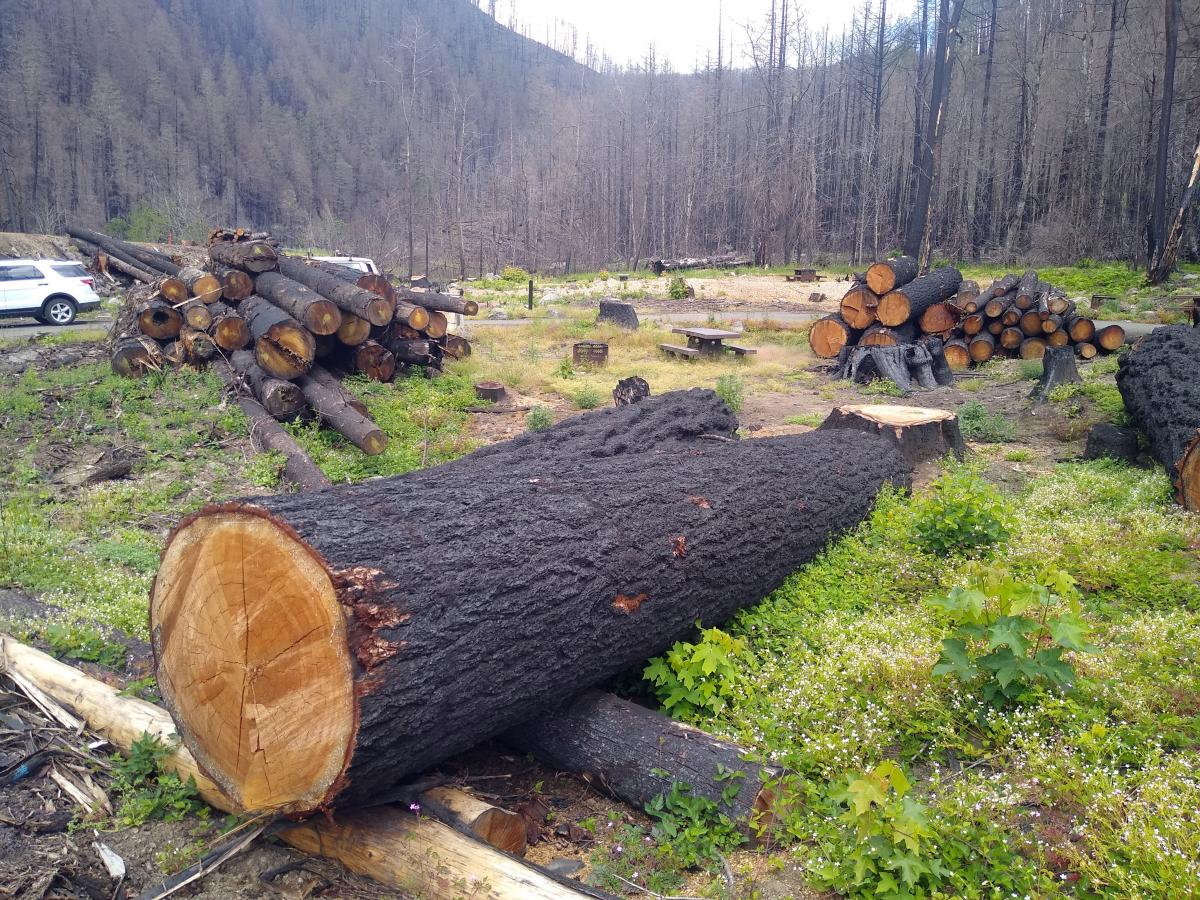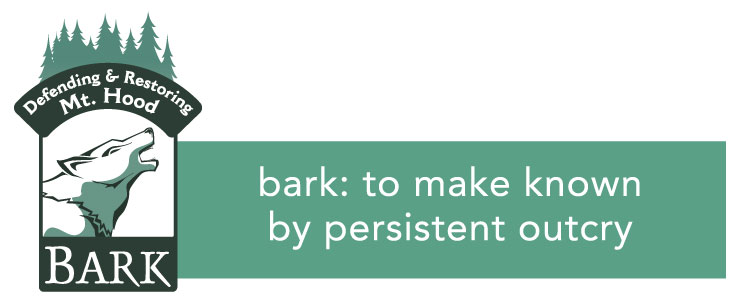Action Alert: A View from the Ground


Recently, I attended a guided tour of the Clackamas River Highway 224 corridor which has been closed to the public since the Riverside fire last September. Immediately, I felt excitement to reconnect with a place I deeply care for and have missed visiting for 9 months mixed with apprehension for the changes I felt sure to witness. As many Oregonians know, the Oregon Department of Transportation and the U.S. Forest Service have been performing “hazard tree” removal since the 2020 Labor Day fires. Accounts of overcutting, unsupported or hurried decisions, fraudulent activities, and a general lack of public transparency were reported extensively in the media. Many of these issues have no official answers or redress. Bark’s helicopter flyover of the Clackamas Highway 224 was included in OPB’s initial reporting on ODOT’s actions.
Action #1: Tell the Forest Service why it’s important to protect what’s left!
Upper Clackamas.mp4 from Green Oregon on Vimeo.
Now, let me offer what I saw inside the closure area of the Riverside fire: The start of the trip felt encouraging. I saw new sprouting on fire-damaged hardwoods and conifers, as well as understory plants blooming below the charred tree trunks. This gave me hope that the forest I remember will return. As the trip progressed, my initial feelings were replaced with gloom as I saw multiple campgrounds devoid of any standing trees. Sections of road where old growth Douglas firs once graced the gentle turns are now unrecognizable, stump-covered slopes. My heart sank upon hearing ODOT’s official statement on the tour that they had tens of thousands of trees yet to cut within the Clackamas River canyon while we looked out over the already bald hill.
As the area is still closed to public access, most people won’t see what I saw. The reality is that roadside logging is especially destructive in a sensitive, post-fire area. For years, Bark has recognized fire to have one of the most generative roles in forest ecology…something that people indigenous to this land have known for millennia. While on this tour, I also felt grateful that Forest Service staff present that day similarly acknowledged the need for extreme care around fire and logging since they will soon be making decisions for the public through their own agency’s roadside “hazard” tree project in the forests surrounding the Clackamas River.
Logging is happening right now under ODOT’s definition of a “hazard tree” as one that has a 50% chance of dying within three years. This means of the approximately 63,000 additional trees slated for logging (many of which were too far upslope for us to see), over 31,000 might not even have died from fire. And of the trees that do die, an even smaller percentage would pose any public safety hazard. As the tour continued, we witnessed countless fire-killed trees from 2002 and 2014’s Clackamas fires that had become snags, tops broken, but still standing. “We accept that there is inherent risk in a forested area, but it appears ODOT is aiming for an extreme reduced risk less than that of an urban tree environment,” said an arborist present on the tour, a statement that looped in my head as I rode back towards Portland, along the already dramatically changed river corridor. On the return trip, I saw trees marked to cut downslope of the road, within mere feet the river.
Action #2: Together we must implore ODOT to end the mismanaged roadside tree removal and protect what is left of the scenic byways and beloved river corridor!
Many more voices are needed to urge both ODOT and the Forest Service to reconsider their baseline level of risk regarding any tree removal along these scenic corridors. The Forest Service, who will soon release their proposal to cut trees along up to 200 miles of forest roads, must understand that while the people values public safety, we will not tolerate excessive cutting. Sharing these images and stories with your friends and families is another way to help support these efforts. And as always, Bark will keep a close watch on opportunities in the coming months to protect what is left of these crucial, riverside forests.

Michael Krochta, Bark Forest Watch Coordinator
